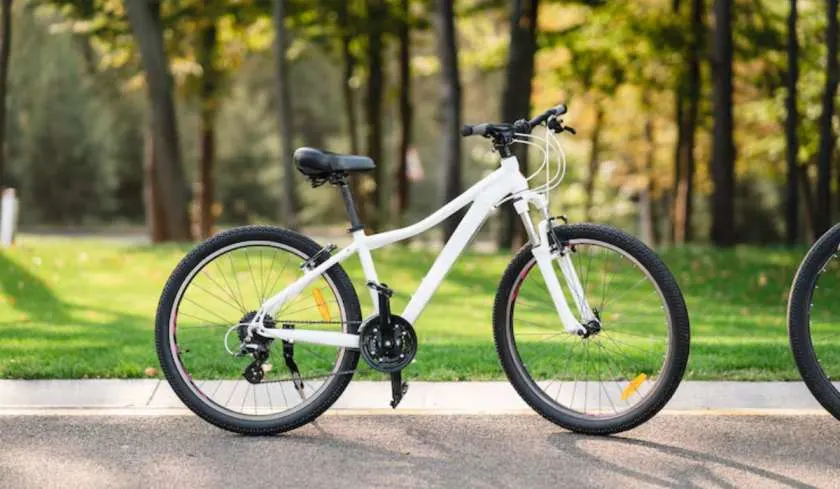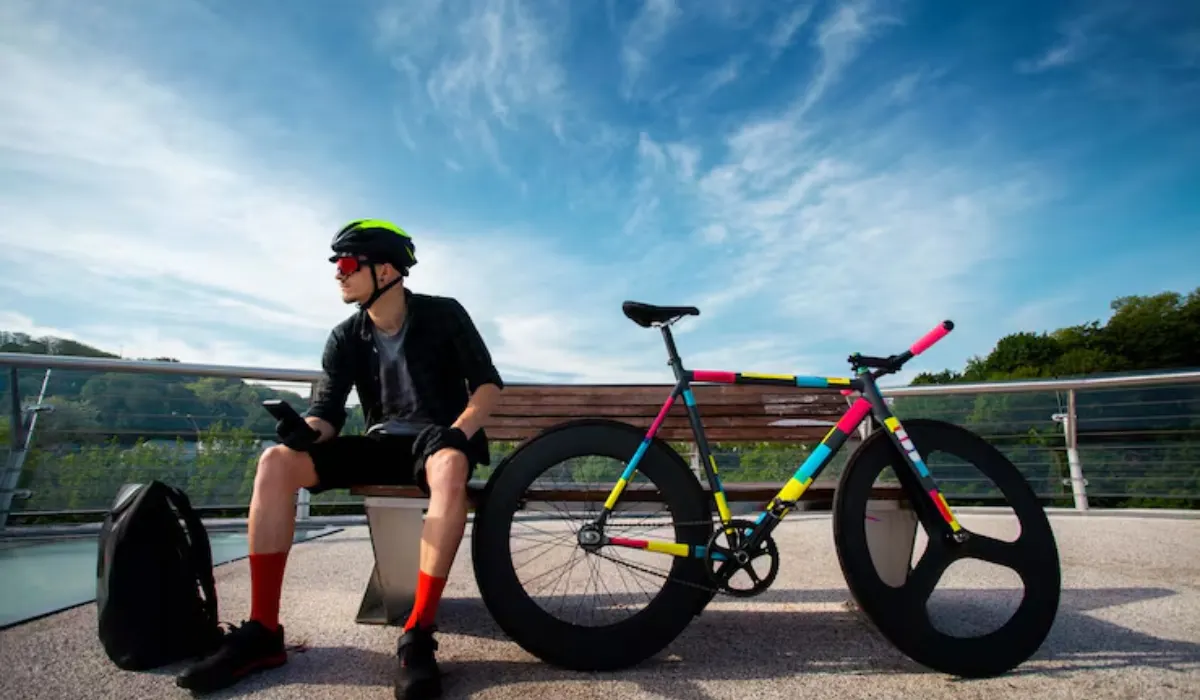Xpedo APX Pro smart trainer: We have all seen the recent explosion in indoor training and the sale of ‘smart’ trainers and the use of the many training/racing apps. So, when Xpedo (yes, the top class pedal manufacturer) announced their new APX Pro smart trainer, we had to get our man in Washington, Chuck Peña, to give it a thorough going over using as many interactive apps as he could find.

For the last three years, I’ve done this silly (and fun) winter riding ”competition” in the DMV (that’s DC/Maryland/Virginia) called Freezing Saddles. It runs from January 1st through the last day of winter and is all about riding your bike outdoors as much as possible. Last winter, I rode every day (78 to be exact and sometimes just as little as one mile) and logged just over 1,000 miles. But not everyone is crazy enough to do this, and for a lot of other people at more northern latitudes, indoor training is the saner option when the temps drop.
A long time ago in a galaxy far, far away, indoor training meant either (1) attaching your bike to a “turbo” trainer with your rear wheel on a roller that creates resistance via air, fluid, or magnetic means (I still have an ancient mag trainer but can’t remember the last time I used it) or (2) rollers. Then you just pedaled away until total boredom set in (one way to help alleviate the inevitable boredom was to watch cycling videos).
Indoor trainers have since gotten “smart” with technology integration that allows the trainer to be paired with training software, such as Xert, to control the resistance. And they’ve evolved from turbo with the tire on a roller to direct drive that attaches to the rear dropouts, replacing the rear wheel and providing a direct connection to the resistance unit.
Some familiar names in the direct drive smart trainer market are Wahoo, Tacx, Elite, and Saris (formerly CycleOps). The newest kid in town is Xpedo, who are probably better known for their pedals.
Xpedo APX Pro
As direct drive smart trainers go, the new Xpedo APX Pro has pretty much all of the features you’d expect:
● Integrated speed, power and cadence
● Low noise level (68 decibels at 200 watts)
● +/- 2% power accuracy readings
● Thru-axle compatibility
● Internal smart cooling
● Electronic and manual resistance control (3 levels)
● 5 degree yaw angle (side-to-side free movement)
● Foldable legs expand to 30″ wide for stability
● Compatible with third party training apps
NOTE that the noise level and power accuracy readings are claimed and I have no way to measure and verify their veracity.
Manufacturer specs for the APX Pro:
● Weight: 47.4 lbs (21.5 kg)
● Dimensions open: 17” (L) x 30″ (W) x 18.5” (H)
● Dimensions closed: 17” (L) x 9.5” (W) x 18.5” (H)
● Fly wheel weight: 18 lbs (8 kg)
● Resistance type: Electromagnetic
● Freehub: 11-speed Shimano/SRAM
● Wheel size compatibility: 700c, 26″ and 24″
● Hub types: 130/135 mm QR, 12×142, and 12×148 thru-axle (adapters included)
● Max power output: 2000 watts at 30 km/h
● Max simulated grade: 20%
● Connectivity: ANT+, ANT+ FE-C, and Bluetooth 4.1
The above features and specs put the APX Pro in the same range as Wahoo KICKR, Tacx Flux 2, Elite Suito, and Saris H3 — fairly heady company.

The other stuff: power supply and power cord, axle spacers, spacer for 10-speed cassette, wheel skewer, and instructions
The integrated speed, cadence, and power means no external sensors are needed. But you will need to buy a cassette.

With the legs folded, the APX Pro is easier to store, but I wouldn’t recommend riding with the legs folded … unless you want to do a very short ride where a mishap of some sorts is likely

The handle makes it easier to pick up and move the APX Pro, but at more than 45 pounds it’s no lightweight
Setting up the APX Pro

If you can read either Chinese or English, you can read the instructions
Setting the APX Pro up to ride is pretty easy-peasy. Just follow these steps:
● Open up the legs and place the trainer on a flat, even surface. If it’s on nice flooring (or if it’s an upstairs room or you live in an apartment with neighbors below you), you’ll probably want to get some sort of gym mat that’s long and wide enough to accommodate the trainer plus your bike. This will protect the flooring, help keep the trainer from moving, provide some sound deadening, and act as a sweat catch pan.
● Adjust the trainer for the right wheel size.
● The APX Pro comes with a drive side spacer for 130/135 mm width hubs pre-installed. If that’s what your bike has, you’re good to go. But if you have a different hub width (or a thru-axle wheel), you’ll need to remove it and replace it with one of the other appropriate spacers.
● Put a cassette on the freehub.
● Insert the appropriate non-drive side spacer.
● Attach the quick release.
● Mount your bike to the trainer just as you would a rear wheel.
● Oh… don’t forget to plug in the trainer.

The APX Pro has a fairly substantial footprint

The feet can be adjusted for height to level the APX Pro

The APX Pro can accommodate different wheel sizes

Rear hub spacers in case you’re riding something other than a standard road bike 130 mm rear hub

130/135 mm spacer pre-installed, but you’ll have to install your own cassette

That’s an 11-30 11-speed if you’re counting

You’ll need the appropriate spacer on the non-drive side
If you want to keep your front wheel a little steadier, you might want some sort of front wheel block. I have one that has three different heights, but my bike sets absolutely level mounted to the APX Pro. So a wheel block would actually raise the front wheel and I’m not using one.

Dead level
Manual riding
It’s entirely possible to use the APX Pro much like an old-fashioned turbo trainer and control the resistance manually. You might call this “dumb” smart training. If you want to do this, there are three different resistance levels that you set by pressing the power button. Level 1 is the default level. Press the power button once to set the resistance to Level 2. Press the power button one more time for Level 3. And one more time to go back to Level 1.

If you have a Wahoo ELEMNT Roam, you can connect it to any smart trainer that has ANT_ FE-C, such as the Expedo APX Pro. You can connect to the trainer either through the ELEMNT app or directly. And then you can manually control resistance in a variety of ways.
● Level – Allows you to choose your power curve and then just ride like riding on a turbo trainer — the faster you go, the harder it gets. The level you select determines the progression of your power curve.
● Resistance – Is like riding a spin bike. You to set the resistance manually anywhere from 0 to 100%. Regardless of speed, resistance will remain the same until otherwise changed.
● ERG – Allows you to set your desired power and the resistance is adjusted to maintain a constant power output, regardless of speed/cadence.
● Sim – Allows you to load route onto the Roam and then ride that route with the smart trainer adjusting resistance based on the terrain map of the route. For a nanosecond, I thought about loading Fleche Buffoon but then came to my senses. I also wondered whether riding Hains Point indoors could be any more mind numbing than the real thing.
I actually created a short test route that included hills that are part of my Peña Peña Wednesday Night Hill Rides to test the Sim feature. I thought the Xpedo APX Pro did a good job of simulating those familiar roads. It was essentially the equivalent of riding a Zwift route but without any of the visual stimulation.
Structured riding
A smart trainer like the Xpedo APX Pro allows you to take advantage of training software to create structured workouts. Think: lots of intervals. Probably the best known is Trainer Road. But since they don’t offer a free trial, I decided to try Xert since they offer a 30-day free trial. Plus PEZ’s Toolbox editor Stephen Cheung has written several articles about Xert using the concept of maximal power available to create a fitness signature and build an adaptive training program.
The Xert app controls the resistance and there’s a dashboard with various metrics. Basically, you ride to power and try to keep the needle pegged to the prescribed watts. But it’s not a virtual ride and there’s no visual stimulation, so I had John Tesh CDs playing on my stereo to distract from otherwise riding nowhere.

This (far right) is all you’ll see when you ride with Xert

Music to ride by
If you want something more “entertaining” for your structured training, you might want to try The Sufferfest,(14-day free trial) which is a favorite of PEZ’s resident literary critic Leslie Reissner. Like Xert, The Sufferfest leads you through a structured workout but also includes race video and music to make otherwise stationary riding more stimulating.

In-race video plus ride data on The Sufferfest
NOTE: Riding with apps requires pairing the Xpedo APX Pro with the app for the power, speed, and cadence sensors. If you’re using a phone or tablet, this is usually via Bluetooth. If you’re using a laptop, you might need an ANT+ dongle if your laptop (like my older MacBook Pro) doesn’t support more recent Bluetooth protocols. All in all, the pairing is relatively easy. You just go to pairing on the app, spin the cranks on the APX Pro to wake it, and the app recognizes it.
ANOTHER NOTE: Some apps actually require that you specify what smart trainer you’re using. The Xpedo APX Pro is so new that it’s not on the list of trainers so I just picked one that I thought was similar enough. I’m not sure how much difference there really is, but something to be aware of.
AND ONE MORE NOTE: I couldn’t get my Garmin vívosmart HR to pair with any of the apps (but it does transmit to my Wahoo ELEMNT Roam). Mine is a several years old model and I’m guessing the Bluetooth protocol isn’t current enough.
Virtual riding
But if you’re spending upwards of $1,000 and if you want the full-effect of a smart trainer, you want to do the Full Monty and do virtual riding to keep you engaged and entertained. Hey, it’s more fun that way!
I tried four.
FulGaz (14-day free trial) offers hundreds of actual riding videos from around the world. They range from short, flat, and easy to longer, hilly, and hard (include Alpe d’Huez). If what you want to do is just ride, FulGaz is a good way to do that. A neat feature is that the ride video moves at the pace you’re riding and a small icon tells you if you’re riding slower or faster than the pace of the ride that was actually done for the video.

The unrelenting uphill of Old Willunga Hill on FulGaz
Rouvy (14-day free trial) has both virtual rides using video (like FulGaz) and augmented rides that are animated. So with Rouvy you can either do your own ride or do group rides with other Rouvy riders.

As if I really needed Rouvy to tell me I’m not that fast
RGT Cycling (free plus a paid premium option that offers more features) is animated riding on real roads. A neat feature of RGT is what they call Magic Roads where you can upload any GPX file of a route less than 100 km they will create a simulation for you to ride.

RGT offers up a Zwift-like experience, but for free
Finally, there is Zwift. I’m guessing PEZ readers already know about Zwift and I probably don’t need to say more than that it’s the most popular indoor cycling app with a sh*t ton (yes, that’s a technical term) of features, including drafting and simulating road surfaces. BTW, Zwift’s 7-day free trial is somewhat misleading. At least in my case, my free trial lasted all of 25 km or just my first ride on Watopia. After that, I was locked out of riding and the app was prompting me to purchase a Zwift subscription. Needless to say, I wasn’t too happy about that. Glad to say the guys at True Communications fixed my Zwift subscription and I’ve started the ‘Tour de Zwift’ this week.

Zwifting somewhere in Watopia
I’m not here to go into all the ins and outs of the various riding apps, compare them, or make any recommendations. But in each case, pairing was easy with the Xpedo APX Pro. And the riding experience was entertaining enough (athough climbing Old Willunga Hill solo on FulGaz was a bit of a slog). As the elevation changed, the resistance on the APX Pro changed to simulate the effort. As best I could tell, this was fairly realistic. And the transitions from flat to up and from up to down were relatively smooth. But what can’t be simulated is the “free speed” going downhill. Unlike the real world where you can coast, you have to keep pedaling. One thing smart trainers don’t do is aero.
One thing I appreciated about the Xpedo APX Pro was that it wasn’t perfectly rigid. The 5 degree yaw allows some side-to-side movement, which makes for a more natural ride feel. Where I really noticed this was doing my best Alberto Contador out-of-the-saddle climbing impression (speaking of which, the Angliru is a ride on FulGaz). The ability to sway slightly mimics the bike rocking under you. There’s also a part of me that believes the yaw feature places less stress on the rear dropouts.
I also did all my riding with my Wahoo ELEMNT Bolt unit turned on to compare power and cadence (measured by my 4iiii left-side only crank arm power meter) to the APX Pro. The two weren’t perfectly in sync (probably because of differences in averaging) but they were always pretty close (within a few watts/rpms). Not confirmation (because I don’t have a way to actually measure independently), but an indication that the APX Pro is pretty accurate (and that I don’t have much of a discrepancy between my left and right legs since my power meter measures on the left side only and simply doubles the measurement for total power).
EDITORIAL COMMENT: Virtual riding is fun and entertaining. If you have to ride indoors, it’s certainly way better than simply churning away on a turbo trainer or rollers. It’s definitely real work and great training. I know a lot of people will disagree with me, but IMHO it’s not real riding; it’s simulated riding (in the extreme, Zwift is an immersive video game). As such you won’t find any of my virtual rides on my regular Strava (because, in my book, they’re not “real” miles). Instead, I have a second Strava just for virtual rides (except for all the rides I loaded as data for Xert to be able to build a fitness profile).
And a word about my indoor riding set up: Indoor riding is more than just attaching your bike a smart trainer. You also need to create a good environment for riding. Special thanks to Alastair Hamilton and my friend Bob Goulder aka The Real Bobke for their advice and answering my questions. Yes, you can do virtual training with you phone or tablet, but I have a home theater projector (older, so 480p DVD quality not HD) so can experience indoor riding on an 82-inch screen. All the apps I used run on an iPad that I can mirror to an Apple TV hooked up to my projector (Zwift has an Apple TV app). I use my iPhone for the Zwift and RGT companion apps (separate from the screen apps). Even though I’m lucky to have a basement with standard height ceilings that stays cool year round, I have a fan (and it’s always a good idea to turn it on when you ride!) I have a second fan that I might use for longer sessions. Speaking of the fan, it’s actually louder than the APX Pro (so I’m not so sure how relevant it is for smart trainers to be “quiet”). Even louder is my stereo.
There’s a new kid in town
Indoor training is a big trend in cycling. Some might say it’s revolutionary. Indeed, it’s one of the fastest growing areas of the bike industry.
In the past, indoor training on a turbo was a way to stave off fitness loss during the winter at the expense of losing your mind. Now, it’s an accepted way to train more specifically and efficiently (regardless of the weather). If you want to do intervals, it’s a whole lot easier to put your bike on a smart trainer connected to something like Xert. And don’t forget that Mathew Hayman won the 2016 Paris-Roubaix after being forced to train indoors due to an injury.
Zwift Stories – Mathew Hayman wins Paris-Roubaix
Plus … gasp! … indoor training can actually be fun and social with the wonders of modern technology, the worldwide web, and wireless internet.
And it’s not just training. There’s actually professional Zwift racing. And the Zwift Academy is a way for riders to earn a ride on the women’s CANYON/SRAM and men’s NTT (formerly Dimension Data) pro cycling teams.
The various apps all offer a different experience. But at the heart of that experience is the smart trainer. Especially a direct drive smart trainer where you don’t have to worry about wearing out a tire (or buying a tire specifically for indoor training) or clamping the trainer to the frame.
Compared to all the other direct drive smart trainers currently on the market, the Xpedo APX Pro ticks all the boxes. Its specs and features are on par with other units at the same price point from other manufacturers (and only the Kinetic R1 offers the same yaw movement feature, but has less power accuracy and is reportedly one of the loudest trainers out there). So unless you regularly produce in excess of 2000 watts or intend to tackle gradients more than 20%, the APX Pro can do it all.
The market for direct drive smart trainers will continue to grow and it’s always good for consumers to have quality choices. As the new kid in town, the Xpedo APX Pro has what it takes to hold its own with others that have been in the game longer. Since it’s that time of year when many riders are making the decision to ride indoors (either because of weather or their inability to channel their inner Eddy Merckx and HTFU), if you’re considering a direct drive smart trainer, the Xpedo APX Pro deserves to be in the mix.

I’ll be riding Freezing Saddles again, but will also mix it up with some indoor riding on the Xpedo APX Pro. However, I’ll do my level best to resist being seduced to the Dark Side like my PEZ compatriots Leslie Reissner (he lives where there’s snow in the winter so has an excuse) and Alastair Hamilton (he lives in the south of Spain so doesn’t have an excuse).
PEZ contributor Chuck Peña is a former weekend warrior racer who now just rides for fun and coffee (as well as the occasional taco), but every once in a while manages to prove Fausto Coppi’s adage true: Age and treachery will overcome youth and skill. He lives in Arlington, VA with his wife (who is his favorite riding partner), his daughter (who takes great joy in beating him at golf all the time, but at least he’s still faster on a bike), and their dog (who is always there to greet him when he comes home from a ride). You can follow him on Strava, Twitter, and Instagram.
Note: PezCyclingNews ask that you contact the manufacturers before using any products you see here. Only the manufacturer can provide accurate and complete information on proper / safe use, handling, maintenance and or installation of products as well as any conditional information or product limitations.



















